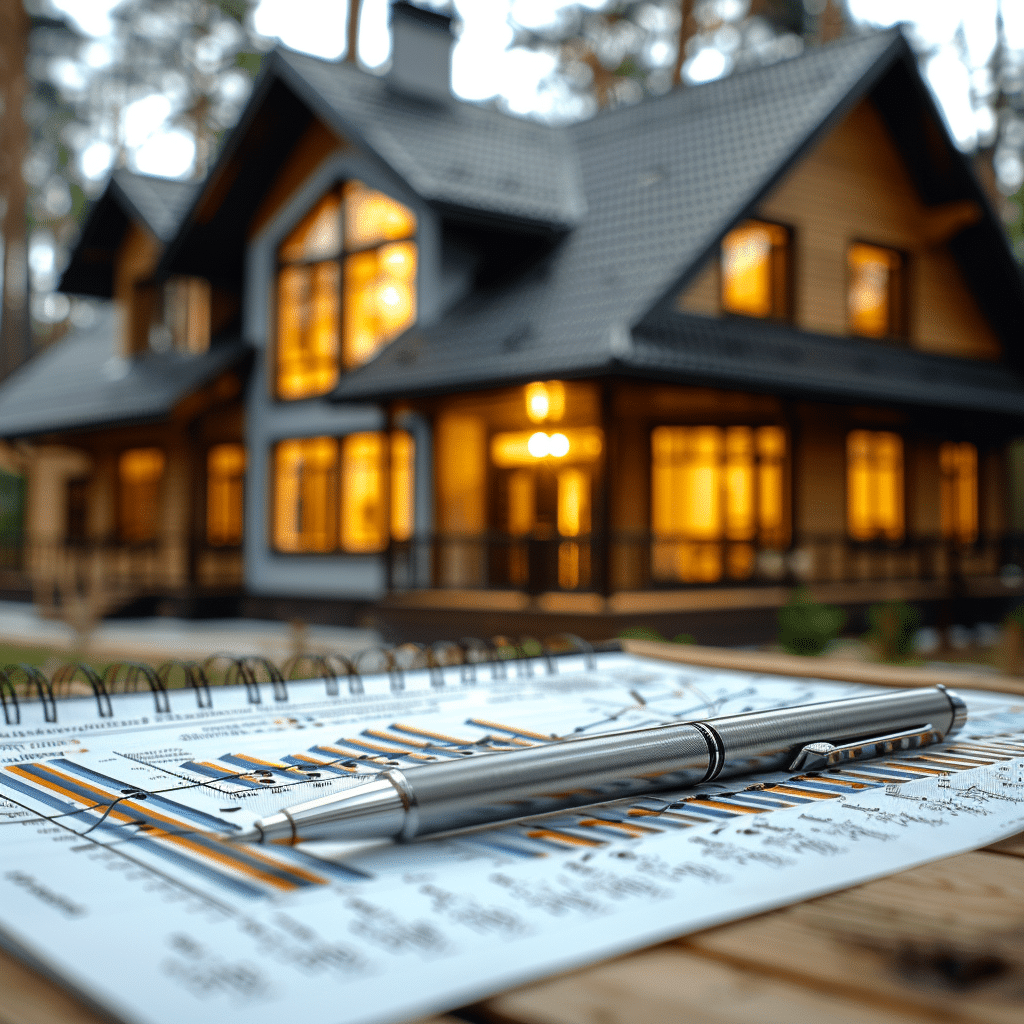Understanding the dynamics of home interest rates over time is not just about numbers and charts; it’s a tapestry intricately woven with economic, social, and technological threads. Today, we’re embarking on a retrospective journey, tracing the ebbs and flows of the housing market across the decades. Let’s delve into the evolution of these rates, dissecting key historical events that shaped these numbers and offering strategic insights to navigate the market with the financial wisdom of Suze Orman tinged with the practical advice of Robert Kiyosaki.

Tracking Home Interest Rates Over Time: A Century of Change
The story of home interest rates is a compelling one, with each chapter colored by the era’s unique economic landscape. From the economic roar of the 1920s to the unpredictable vigor of the present, changes in home interest rates reveal much about our society’s journey. By examining the historic mortgage rates, we not only understand past patterns but unearth tools for predicting future trends.

The Early 20th Century: A Home Interest Rates Overview
In the Roaring Twenties, credit bloomed, and so did buying on margin. Interest rates remained relatively low, tempting many to invest in the housing bubble that preceded the heartache of the 1929 crash. The Great Depression, however, brought a sobering realignment, with rates plummeting as the focus shifted from investment to mere survival.
After the tribulations of World War II, the nation sprung back, and the economy boomed. The housing market, fueled by pent-up demand and support from the GI Bill, saw interest rates rise modestly—but home ownership became the backbone of the American Dream.
| Year | Average 30-Year Fixed Rate | Average 15-Year Fixed Rate | Prime Rate | Key Economic Events Influencing Rates |
| 1980s | 12.70% (1982) | Not commonly used | 20.50% (1981) | Recession; High inflation |
| 1990s | 8.12% (1990) | 7.83% (1995) | 10.00% (1990) | Economic recovery; Lower inflation |
| 2000 | 8.05% | 7.72% | 9.00% | Dot-com bubble burst |
| 2001-2005 | 5.87% (2003) | 5.21% (2003) | 4.00% (2003) | Low post-9/11 rates; Housing boom |
| 2006-2010 | 6.41% (2006) | 6.07% (2006) | 8.25% (2006) | Financial crisis; Great Recession |
| 2011-2015 | 3.91% (2012) | 3.10% (2012) | 3.25% | Recovery; Quantitative easing |
| 2016-2020 | 3.65% (2016) | 2.93% (2016) | 3.75% (2018) | Modest increases; Economic growth |
| 2021 | 2.65% (Jan) | 2.16% (Jan) | 3.25% | Pandemic; Record low rates |
| 2022-2023* | 6.33% (Oct 2022)** | 5.54% (Oct 2022)** | 7.00%** (Mar 2023) | Inflation; Monetary Policy Tightening |
The Golden Age of Homeownership: Rates in the 1950s and 60s
The post-war era heralded a golden age for homeownership. The GI Bill was a catalyst, providing veterans with financing options that ushered in an era of suburban expansion. Even as civil rights and social upheaval tiptoed into the national consciousness, interest rates held steady, buoyed by the economic stability of the times.
Stagflation and Soaring Rates: The 1970s Crisis
The 1970s spelled trouble, friends. Stagflation gripped the economy, and home interest rates soared. The oil embargo thickened the plot, while the Federal Reserve’s interventions, though well-intentioned, could not immediately soothe the tempest. The housing market reeled under the weight of double-digit rates, and for many, the American Dream seemed on hiatus.
The Volatile 1980s: Peaks and Valleys in Home Interest Rates
Ah, the 1980s—a decade of Madonna, Pac-Man, and, well, peak home interest rates. Federal Reserve Chairman Paul Volcker took inflation to task with aggressive interest rate hikes. For those looking to buy a home, the financial landscape was rough, with interest rates hitting punishing highs.
The 1990s: Stability and Growth in the Housing Market
As the Internet Age dawned, the economy revved its engines, and home interest rates plateaued. The dot-com boom fostered economic expansion, and stable rates beckoned prospective homeowners. Regulatory changes sailed under the radar but had subtle yet significant influences on the housing market.
The 2000s: Bubble, Burst, and Interest Rates
The early 2000s were a rollercoaster for the housing market. The bubble grew until the tension was too much, and it burst. In response to the 2008 crisis, interest rate cuts rained down as the Federal Reserve scrambled to cushion the fall, aiming to avert a financial catastrophe reminiscent of the Great Depression.
Home Interest Rates in the 2010s: The Recovery Era
The 2010s marked the slow, steady recovery of the housing market, with quantitative easing holding the reins. As the economy regained its footing, interest rates were influenced by the Federal Reserve’s careful tapering of its policies, setting the stage for a different kind of market movement.
The 2020s: Pandemic, Economy, and Home Interest Rates
Then came 2020, with a challenge no one saw coming—the COVID-19 pandemic, leading to historically low interest rates to stimulate the economy. The early 2020s have been a whirlwind of change for home interest rates, with numbers dipping and diving like a rollercoaster at the county fair. By looking closely at the historical mortgage interest rates, and the history Of mortgage rates, we gain insight into current trends that are shaping the housing market now.
Technology, Regulation, and Future Predictions
Don’t forget the tech! Innovations, from AI to blockchain, could soon weave their threads into the home interest rates story, possibly making the market more transparent and swift-moving. Post-2020 regulations aim to build a sturdier financial house, their impact on rates to be seen in the long stretch.
Innovate to Navigate: Strategies for Dealing with Changing Home Interest Rates
Now, let’s chat about tools and tactics for managing these shifting sands. Financial savvy can turn the tide of fluctuating home interest rates to your favor. Understanding the past, armored with historical insights, homeowners and hopeful buyers can forge paths to owning their piece of the American Dream—weathering storms, seizing sunny days, and learning from each twist in the plot. For instance, lockdowns might’ve been as welcome as a skunk at a lawn party, but for interest rates, well, they dipped lower than a limbo stick at a beach bash, offering unique opportunities for savvy homeowners to refinance.
In this narrative of home interest rates over time, thread by thread, we see that the market is not onerous—it’s dynamic, a landscape to be traversed with a keen eye and an understanding of its history. It’s a bit like trying to predict The bear season 3 plot twists—you analyze past episodes and chart your bets accordingly.
So as we stand here in the brisk dawn of 2024, pondering the journey of home interest rates from their inception to the present, remember, it’s not just a history lesson. It’s knowledge that can shield you when financial winds blow cold or lead you to sunshine when the market blossoms. Whether you’re wrestling with the decisions in the aftermath of an i 75 fatal crash in your financial plans, looking for a shield against economic burns with the zinc sunscreen of thoughtful planning, or considering the Auvelity of a new mortgage strategy, the past holds the keys to your future success.
In sum, this historical guide provides more than just a peek into the rearview mirror. It’s a well-spring of wisdom, a lighthouse guiding through the foggy shores of home interest rates, ensuring you’re equipped to make decisions that won’t just be good, but downright smart. Let’s take savvy steps based on lessons of yesteryear and carve out our financial narratives with confidence, shall we? After all, who doesn’t want to be the maestro of their mortgage symphony?
Unraveling the Twists and Turns of Home Interest Rates Over Time
Well, buckle up, because we’re about to embark on a whirlwind tour of the ups and downs of home interest rates over time. It’s like riding a financial rollercoaster—only with less screaming and more calculators.
Flashback to Frenzied Rates
Hold onto your hats! Did you know that back in the roaring ’80s, interest rates were like a bucking bronco? In October 1981, folks were coughing up an eye-watering average of 18.45% on a 30-year fixed-rate mortgage. Can you imagine dishing out that kind of dough? Buying a home back then might have felt less like a smart investment and more like spinning the roulette wheel in Vegas, with much less glitz and no complimentary drinks. It’s a stark contrast to the more recent rates that, at their lowest point, had homebuyers doing a happy dance with rates that once bottomed out near 3%.
A Dip into the Present
Now for a smooth segway into today’s times: Did you ever wonder why your friend’s mortgage payments are as predictable as grandma’s meatloaf recipe while yours seem to jump around like a kangaroo on a pogo stick? Well, that difference probably comes down to fixed versus adjustable rates. Those with fixed-rate mortgages locked in their rates, planting their financial feet firmly on the ground, while those with adjustable-rate mortgages ride the waves of fluctuating interest rates. It’s no secret that the current landscape of the housing market can sometimes feel as complex as a hedge maze, but understanding these dynamics is like having a nifty map to find your way out.
Remember, the journey of home interest rates over time is more than a series of dry dates and figures; it’s a patchwork of history, economics, and personal stories. So, next time you’re considering a refi or dipping your toes into homeownership, remember the wild ride we’ve had—from the peak rates of the ’80s to today’s historic lows. It just goes to show, in the world of home interest rates, the only constant is change—and the occasional need for a strong cup of coffee to soothe those rate-watching jitters.




